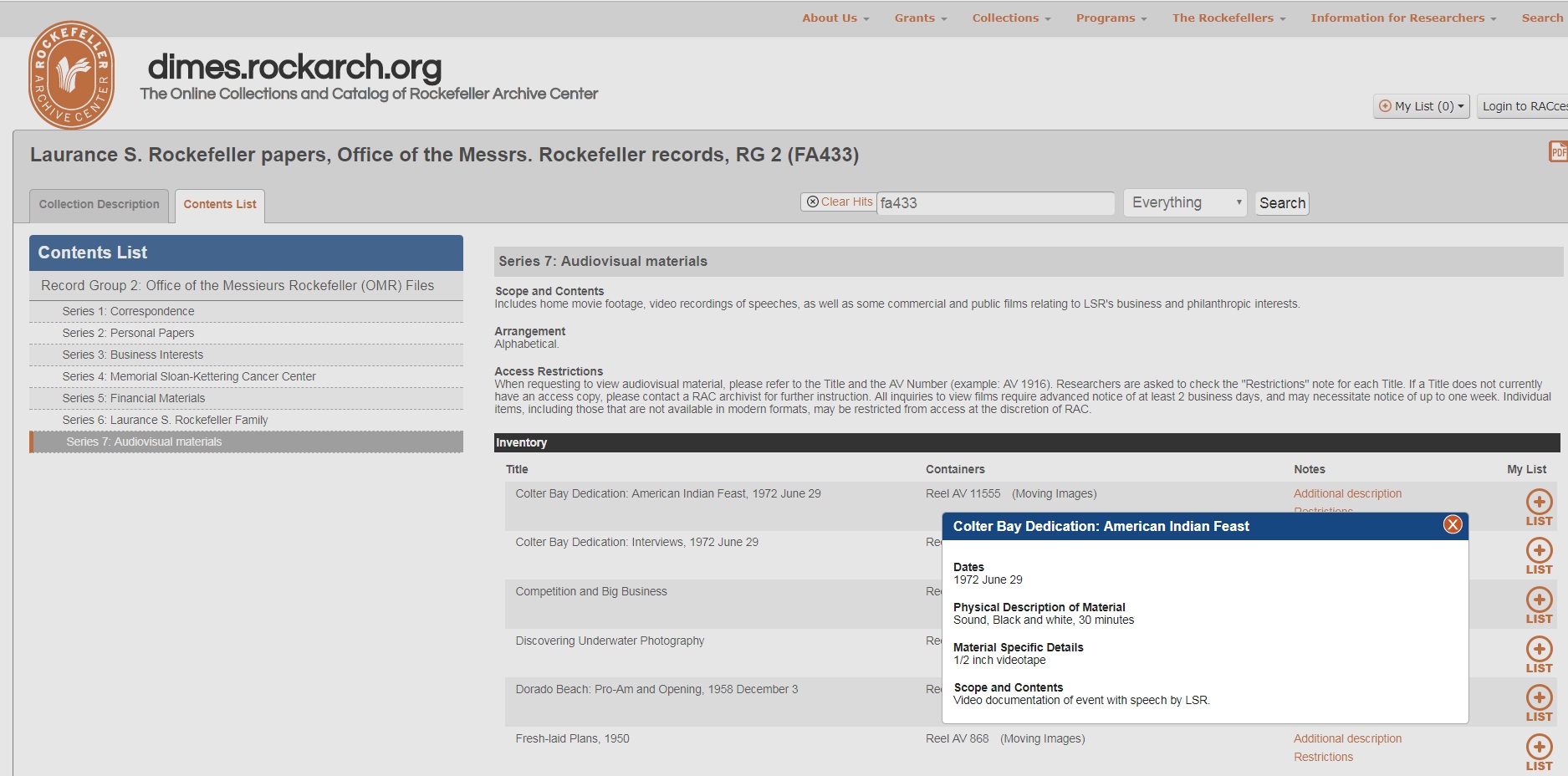Audiovisual Processing
I feel fortunate that the RAC has always gathered and/or maintained some form of documentation for their roughly 13,000 films, video, and audio elements. However, as with any archival institution, this information has been collected by several different individuals, who have sometimes employed different approaches over the course of many “eras” of RAC’s history. Applying consistency to audiovisual description became one of the first goals undertaken.
ArchivesSpace is the RAC’s information management application for managing and providing web access to archival collections via EAD finding aids. And while I (who merrily toil in the world of analog a/v elements) find ArchivesSpace an imperfect fit for gathering and recycling all audiovisual metadata, it is certainly an adequate and intuitive tool that allows global on-line accessibility and broad knowledge of “what we have.”
Bob Battaly, RAC’S Head of Processing, and I collaborated in an examination of several current “approaches” to audiovisual processing and description, in particular those devised by the Smithsonian Archives of American Art. Happily, the processing levels used by the AAA very much mirror the general concepts that Bob already had in place here at RAC. We both agreed that standardization is vital, but the real enduring strength of the Levels of Processing can be seen in the options and flexibility provided within the standardized framework. As such, each level of work builds upon the foundation already accomplished at the previous level.
There is, to some degree, disagreement within the archival profession regarding what constitutes minimal level description for a/v material. I believe there are a few key components required for any record, these are: title, original format, date of creation (as best as can be determined), physical description (color, black and white, silent, sound, etc.), duration, and a brief content description. Again, the goal is to assist the user/patron to locate and identify the material they need. Of course, some of this data can only be learned after an analog item is digitized and actually viewed and/or heard. (Note: Given the rarity and fragility of our holdings, playback of an original tape for cataloging purposes is verboten.) Hence, it is necessary to enhance existing archival records with added description post-digitization - but I am getting ahead of myself.
Once our new processing instructions were drafted, a basic “clean-up” of current finding aids with existing a/v description was undertaken. This is intended to give uniformity to the “researcher experience” as they explore across collections for audiovisual material. (This modification process is presently on-going.)

One final point: the RAC, like many archival institutions, uses an additional “back end” system to collect all technical, structural, physical, and preservation metadata for audiovisual items. This enables quantification and preservation planning. For example, a basic film inspection can yield dozens of preservation points, including: film gauge, soundtrack type, shrinkage level, film base, deterioration level, overall condition, type of damage, generation, manufacturer, et. al. This data both powers and prioritizes which titles are at the highest need for preservation. (Additionally, as we have an active film print library for on-site researcher Steenbeck viewing, it is necessary to discern a print’s ability to withstand such casual watching.)
Come back tomorrow for Part 3: Accessioning!
This is a post in a series: Reflection: A Year in the Life of an Audiovisual Archivist